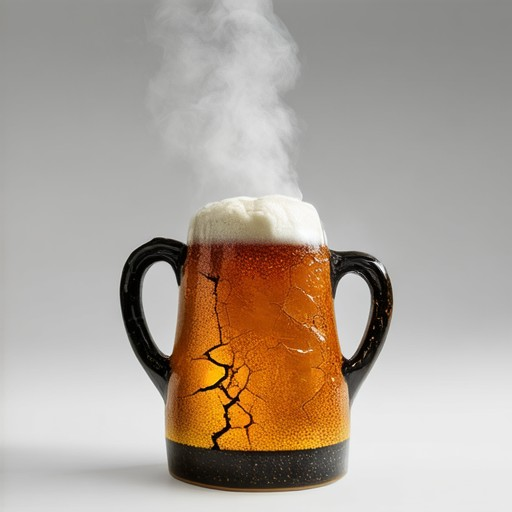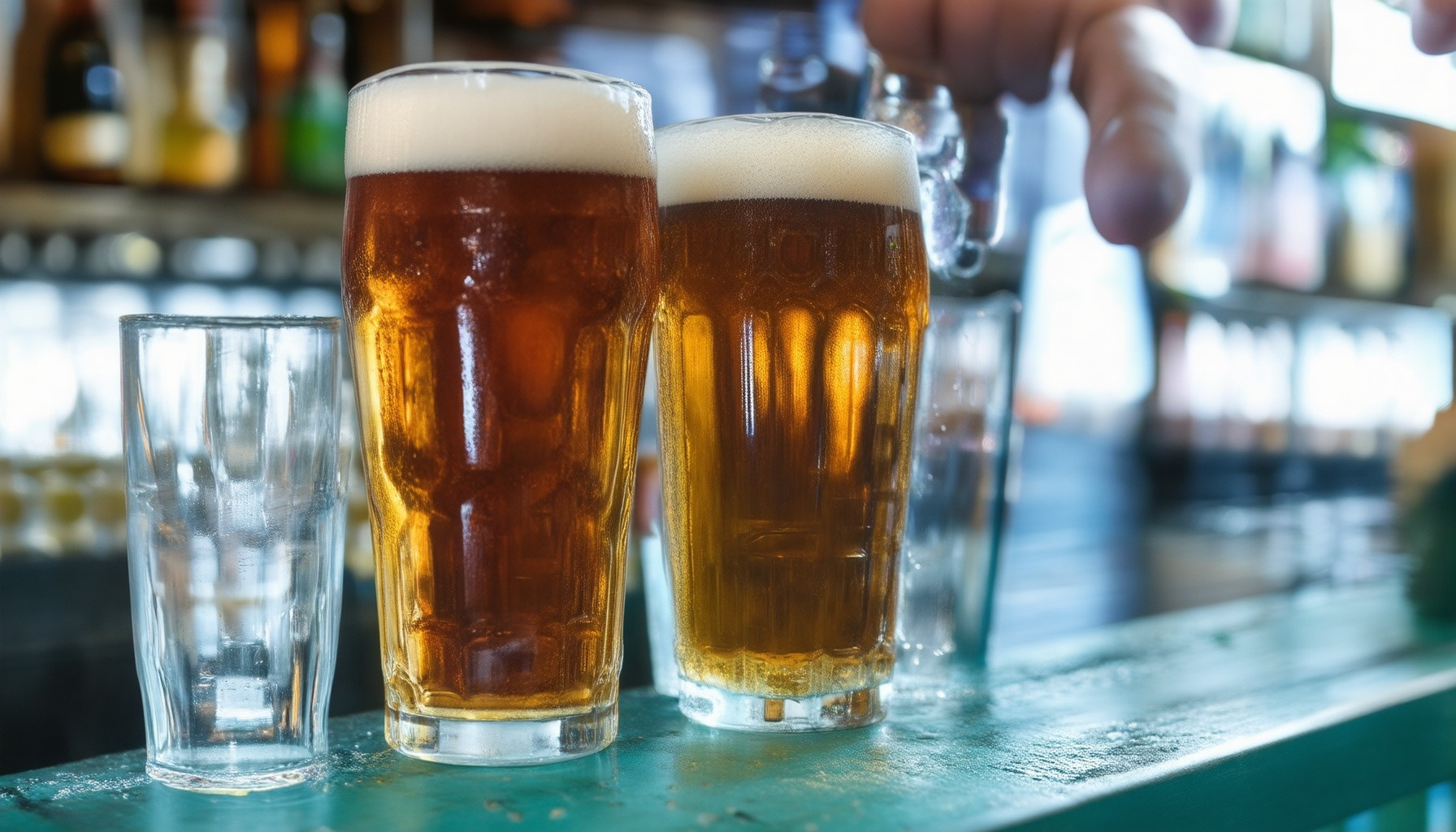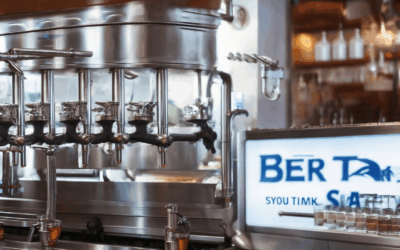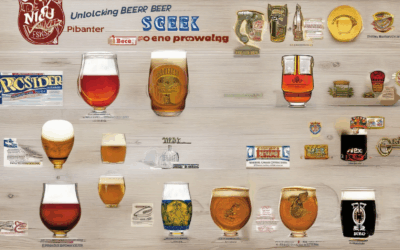Beer, a beloved beverage enjoyed across cultures for centuries, often carries an image of refreshment and celebration. While its popularity and variety continue to grow, there are lesser-known aspects of beer that warrant attention—its hidden weaknesses. From health impacts to social and economic factors, beer’s disadvantages are often overlooked in favor of its celebrated strengths. This article delves into the less-discussed challenges, exploring everything from beer’s role in health to its position within the broader alcoholic landscape. By examining these facets, we aim to provide a balanced perspective on beer’s strengths and weaknesses, helping you make informed decisions about its consumption and impact. Whether you’re a casual drinker or a connoisseur, this exploration will shed light on the complexities of beer and its place in modern society.

What Are the Disadvantages of Beer?
Beer, while enjoyed by many, has several potential downsides when consumed in excess or improperly. Understanding these drawbacks can help individuals make informed decisions about their consumption.
Short-Term Health Risks
- Dehydration: Alcohol has a diuretic effect, leading to increased urination and dehydration, which can cause headaches and fatigue.
- Hangovers: Excessive alcohol intake can result in hangovers, characterized by nausea, headache, dizziness, and sensitivity to light and sound.
- Blood Sugar Spikes: Beer contains carbohydrates, which can lead to rapid increases in blood sugar levels, potentially affecting those with diabetes or contributing to weight gain.
- Vomiting: Alcohol can stimulate the vomiting reflex, particularly in cases of excessive consumption or when combined with food.
Long-Term Health Concerns
- Liver Damage: Chronic alcohol consumption can strain the liver, leading to conditions like cirrhosis and hepatitis.
- Cancer Risk: High alcohol intake has been linked to an increased risk of cancers, including breast, liver, and mouth cancers.
- Alcohol Dependence: Regular and heavy drinking can lead to addiction, causing significant personal and professional challenges.
- Impact on Metabolism: Alcohol disrupts metabolic processes, slowing down fat oxidation and increasing fat storage, particularly around the abdomen.
Behavioral and Social Implications
- Impairment: Alcohol impairs cognitive and motor skills, leading to poor decision-making and an increased risk of accidents.
- Social Issues: Heavy drinking can contribute to domestic violence, public disorder, and strained relationships due to intoxication-related behavior.
- Mental Health Effects: Excessive alcohol use can exacerbate mental health conditions such as anxiety, depression, and PTSD.
Interactions with Medications
- Beer can interact negatively with certain medications, such as those affecting the central nervous system or blood thinners, potentially leading to adverse effects.
Environmental Impact
- The production and distribution of beer contribute to carbon emissions and resource depletion, making it an environmentally taxing industry.
By understanding these disadvantages, consumers can enjoy beer responsibly, balancing their intake with awareness of potential health and social risks.
Is Beer the Weakest Alcohol?
Beer is often considered one of the weakest alcoholic beverages due to its relatively low alcohol by volume (ABV). Most beers range between 4% to 6% ABV , though craft beers and stouts can reach slightly higher concentrations. In comparison, other popular beverages like wine (12-14% ABV), spirits (15-40% ABV), and even hard cider (6-8% ABV) generally have higher alcohol content.
The strength of beer varies depending on the type:
- Lagers and Ales : Common beer types typically fall between 4-6% ABV.
- Stout and Porters : These robust beers often have slightly higher alcohol content, usually around 5-7% ABV.
- Cocktails and Mixed Drinks : When mixed with other ingredients, beer’s ABV can be reduced further.
For those seeking a lighter alcohol option, beer is a popular choice due to its moderate strength and variety of flavors. Whether you’re enjoying a refreshing lager or a rich stout, beer remains one of the most accessible and approachable options for casual drinking occasions.
Explore our Beer Styles Guide to learn more about the diversity of beer types and their unique characteristics.

What Are the Three Enemies of Beer?
Brewers and beer enthusiasts often talk about the factors that can cause beer to go bad or lose its freshness. Here are the three primary enemies of beer:
- Oxygen: Oxygen is one of the most common enemies of beer. It can cause oxidation, leading to off-flavors and a short shelf life. Overexposure to air can turn beer into a unpleasant taste, often described as “skunked” or “canned.” Brewers take measures like using inert gas during packaging to prevent oxygen from entering the bottles.
- Temperature: Temperature plays a critical role in beer preservation. Beer is highly sensitive to changes in temperature. Excessive heat can spoil the beer, while cold storage is essential to maintain its flavor and stability. Proper refrigeration is key to keeping beer fresh.
- Exposure to Light: Light can negatively affect beer’s appearance and taste. UV rays from sunlight can cause the beer to develop skunk-like odors due to photoinhibition. Store beer in dark places to preserve its quality and prevent lightstrike damage.
By understanding these three enemies, you can better appreciate the importance of proper storage and handling to enjoy your beer at its best.

Beer Syndrome
Beer syndrome, also known as auto-brewery syndrome, is a condition characterized by the production of ethanol in the body due to fermentation processes occurring in the digestive system, oral cavity, or urinary tract. This phenomenon occurs when microorganisms in these areas ferment sugars found in certain foods or drinks, particularly those high in sugar content.
Causes
The primary cause of beer syndrome is the presence of sugar-rich substances that can be fermented by gut bacteria or other microorganisms. Common triggers include:
- Sugary beverages like beer, wine, or sugary sodas
- Foods rich in simple carbohydrates, such as bread, fruits, or honey
- Some medications, such as antacids containing alcohol
Symptoms
Individuals affected by beer syndrome may experience a range of symptoms, including:
- Headache or discomfort in the abdominal area
- Nausea or vomiting
- Dizziness or imbalance
- Short-term memory loss or confusion
- Flushed skin or facial redness
Diagnosis and Treatment
Beer syndrome is typically diagnosed based on a patient’s history of consuming sugar-rich foods or beverages and the presence of characteristic symptoms. Treatment usually involves:
- Avoiding consumption of triggering foods or beverages
- Drinking water to dilute the ethanol concentration
- Seeking medical advice if symptoms persist or worsen
Key Points
Beer syndrome is often confused with alcohol intoxication, but it differs in that the ethanol is produced internally rather than from external sources. It is important to recognize the condition early to prevent complications and seek appropriate care when necessary.
What Does Beer Intolerance Feel Like?
Beer intolerance, often referred to as alcohol sensitivity or alcohol intolerance, can manifest through a variety of physical and mental symptoms immediately after consuming alcohol. Understanding these sensations can help individuals recognize when they may be sensitive to certain beverages.
- Stuffy Nose: Many people experience a runny nose or congestion after drinking beer, which can be particularly noticeable if they are not used to consuming alcohol regularly.
- Flushing Skin: A red or flushed complexion is a common reaction, often due to increased blood flow to the surface of the skin.
- Headache: Migraines or mild headaches are frequent complaints among those with beer intolerance, sometimes accompanied by pressure in the head.
- Dizziness or Imbalance: Some individuals report feeling lightheaded or experiencing a sensation of imbalance, which can be disorienting and uncomfortable.
- Nausea or Vomiting: In severe cases, consuming beer can lead to nausea or even vomiting, particularly if the individual has a sensitive stomach.
- Stomach Pain: Abdominal discomfort or cramps are common, often resembling the discomfort felt after eating something disagreeable.
- Heartburn: Acid reflux or heartburn can occur as a result of alcohol consumption, especially in those prone to gastrointestinal issues.
These symptoms can vary greatly between individuals and may become more pronounced over time if alcohol sensitivity is not addressed. It’s important to pay attention to how your body reacts to beer to better understand your personal thresholds and make informed decisions about your diet and lifestyle.

Beer Belly Syndrome
Beer belly syndrome is a colloquial term commonly used to describe the accumulation of excess abdominal fat, often linked to excessive alcohol consumption, particularly from high-calorie beverages like beer. While the term may not be officially recognized in medical literature, it highlights the potential impact of lifestyle choices on body composition.
Causes and Risk Factors
The primary contributors to beer belly syndrome include:
- Excessive Alcohol Intake: Alcohol is calorie-dense, and chronic consumption can lead to weight gain, particularly around the midsection. Beer, with its higher carbohydrate content, may contribute more significantly to fat storage compared to other forms of alcohol.
- Poor Diet: Consuming processed foods, sugary snacks, and unhealthy fats alongside alcohol can exacerbate weight gain and fat retention in the abdominal area.
- Lack of Physical Activity: Sedentary lifestyles and inadequate exercise can lead to fat accumulation, especially if paired with a high-calorie diet.
- Genetics: Individual differences in how the body stores fat may influence the development of beer belly syndrome.
Symptoms and Health Risks
Common symptoms include:
- Bloating
- Discomfort or pain in the abdomen
- Difficulty losing weight, especially in the midsection
Over time, beer belly syndrome can increase the risk of serious health conditions such as cardiovascular diseases, hypertension, and type 2 diabetes, which are often associated with obesity and metabolic syndrome.
Prevention and Management
To manage or prevent beer belly syndrome, consider the following strategies:
- Moderation in Alcohol Consumption: Limiting alcohol intake to moderate levels and choosing lower-calorie options can help reduce fat accumulation.
- Dietary Adjustments: Incorporate a balanced diet rich in fruits, vegetables, lean proteins, and whole grains to support overall health and fat loss.
- Regular Exercise: Engage in physical activities such as brisk walking, jogging, or strength training to promote fat burning and muscle toning.
- Consult Healthcare Professionals: If concerned about health impacts or struggling to lose weight, seek advice from healthcare providers who can offer personalized guidance and monitoring.
Conclusion
Beer belly syndrome underscores the importance of mindful lifestyle choices. By adopting a healthier diet, reducing alcohol intake, and staying active, individuals can work towards achieving and maintaining a healthier body composition. Consulting with healthcare professionals can provide tailored strategies to address specific concerns effectively.





0 Comments